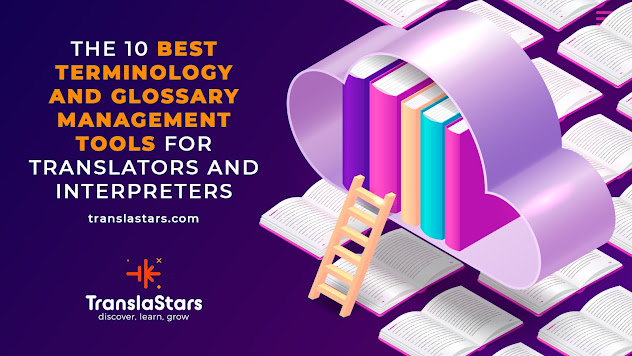Why is translating copy so hard?
Table of contents:
Copywriting is hard to translate, no question about it. What makes it so difficult is that it has developed into a branch of translating on its own. Marketing translators need to become experts to translate this type of text successfully and develop the creativity and writing skills to deliver.
There are countless examples of copy translation that have gone wrong, even in big-name brands campaigns. Who can forget Coors Brewing Company failing with their “Turn it loose!” campaign? Which was translated as “Suéltelo todo” in Spain and interpreted as a euphemism for being stomach sick. Or how the KFC “Finger-Lickin' Good” slogan turned into “Eat your fingers off” in China. Not very appealing, even if kind of funny.
These are examples of why companies need to hire marketing translators who know their craft, and reminders of how much of a marketing campaign depends on its copy, therefore, of its translation. But why do these mistakes happen? Well first, let's have a look at what copywriting essentially is.
What is copywriting?
Copywriting is the process of writing persuasive marketing and promotional materials that motivate people to take some form of action, such as buying an item, clicking a link, or sending a message. These materials are known as “copy” and vary from written text on social media, to the slogan of a brand, to the script for a radio ad. Once you learn about it, you'll realize it's everywhere!
The main goal of copywriting is to persuade people and make them connect and interact with the brand message you are trying to convey. To do this, a good copy puts the target reader at its center, it's clear and concise, and it grabs people's attention while maintaining the brand´s tone and voice. It's all about being creative and saying a lot in a few words. If you want to learn more about it, TranslaStars has a MicroDegree in Copywriting for Translators on their page.
Now, from this definition, you can see why translation can be a pain. There are so many layers to copy that it is easy for one of them to, pardon the pun, get lost in translation. This, unfortunately, lessens the intention and impact of the original text.
Why is copywriting so hard to translate?
Why context is king (or the importance of tone and target audience)
If you have dipped your toes in the copywriting of content writing you know the expression “content is king”. This phrase refers to the fact that nowadays quality content is the way to build an audience, and that companies that produce useful content for their audience get more- and more loyal clients.
The thing about good copy and good content is that both rely on their context. You have to consider the brand voice and tone in which you want to convey the message, you have to think about the message itself and its goals, and above all, you must consider the intended reader, the target audience of the brand.
What if the target audience changes between cultures? Will the message have to change?
How do you translate a tone? How do you keep the persuasive message effective? How to maintain a similar length (because you also must think about the visual design)? All things must pass through a translator's mind while working with a copy.
Translating humor ain't no joke
One of the first things they teach you when studying translation is that humor is hard to translate- and copywriting is filled with it.
Copy generally needs to be short, clever, and snappy. You have seconds to grab people's attention and then you have to fistfight a thousand distractors to keep it. You have to use short sentences and simple words (which also makes translation complicated) and add a flare to it. That extra spark is usually humor.
Jokes, wordplay, and sometimes idioms, are often used in copywriting to make it engaging to the reader, and each of them presents different challenges to translators. Jokes usually also depend on context and what the target audience already knows. Even if some humor can be universal, some is deeply tied to culture and language. So it's really hard for translators to avoid at all costs people looking at a copy and saying… “I don't get it”.
Wordplay and puns are other types of challenges. Frequently they rely on the way words are spelled or how they sound, which usually changes once you translate the message to the target language. For example this joke:
“The past, the present, and the future walked into a bar. It was tense.”
or this one
“I was walking past a farm, and a sign read: “Duck, eggs!” I thought, “That’s an unnecessary comma.” Then it hit me.”
Both taken from the Grammarly blog, wouldn't probably work in another language but English.
Idioms are also almost impossible to translate. Most idiomatic expressions are tied to each culture and usually don't make sense at all when translated literally. Irony, allusions, subtle jokes, and specific cultural references, also challenge translators in copywriting and marketing in general.
When literal translations are a no-go
Sometimes companies want to keep their brand voice or their slogan as close to the original as possible, and they ask for a literal translation. This is without a doubt the cause of many mistakes, like the ones I used as examples before. As idioms, some slogans or short copy make sense just in their original language, and a literal translation would end up as a grammatical nightmare, or something meaningless.
This is where translators need to get creative and come up with a new slogan or text based on the original material. Similar enough in its intent and message, but different enough to work in the target language.
This process is called transcreation.
What is transcreation and how does it help?
Transcreation comes from the combination of the words “translation” and “creation”, and it consists in adapting advertising messages from their original language into the target language. When the task of translating copy goes beyond translation and even localization, you need to call an expert in transcreation.
Transcreators usually are also versed in copywriting, and their services ensure that all the layers of copy (content, tone, intent, and style) are maintained, even if the words used are different. After all, what matters is that the new copy evokes the same feelings as the original and that it persuades the readers to take action.
Globalization and digitalization have made transcreation more important than ever. Brands that are trying to reach an international status have to invest in quality translation, localization, and transcreation, so their brand identity, voice, and marketing campaigns don't fail in foreign markets.
Learning transcreation can be an amazing tool for every translator, so if you feel confident in Spanish you can check up this Translastars webinar about the process of transcreation: El proceso de transcreación: del brief al feedback con el cliente.
Finally…You can´t forget SEO
SEO (Search Engine Optimization) has become a really important element of digital content. It's an improvement on your website or blogs, it helps them gain visibility, and it makes it easier for your target audience to find them, via keywords.
However, when translating digital content those keywords may change. Brands need people who know how to make the best of that transition between languages and do what is known as SEO localization. This is another completely fascinating field and you can learn more about it in the bootcamp SEO Marketing Localization.
By Rebeca Oliva





Comments
Post a Comment